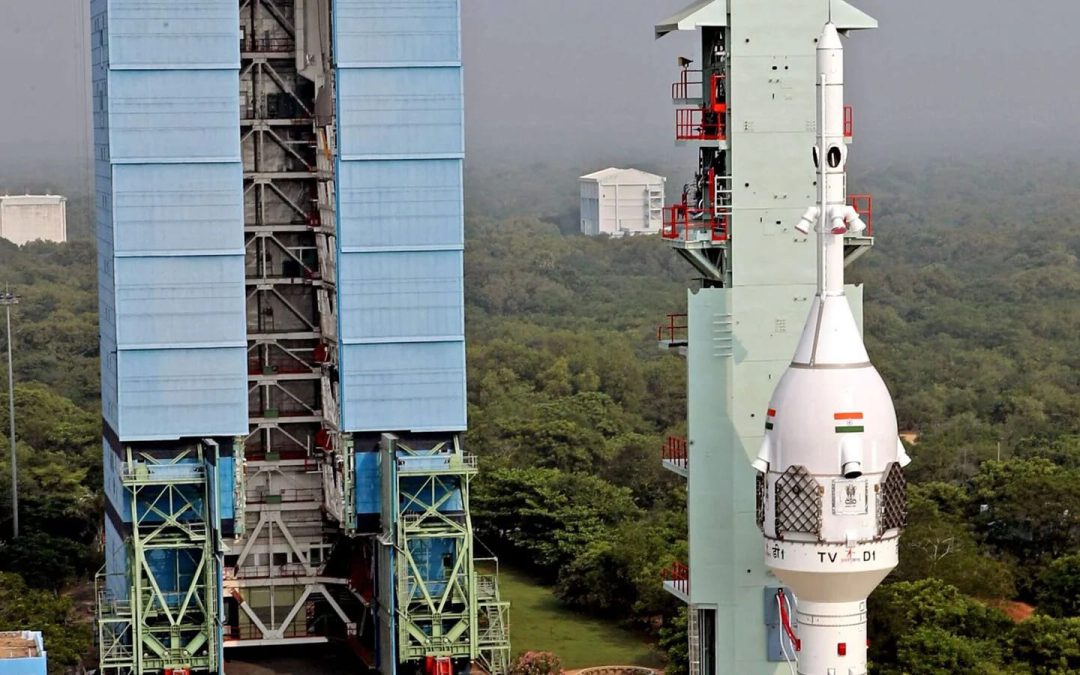On Tuesday, ISRO Chairman S. Somanath announced that the space agency plans to conduct over 70 launches in the next five years, including the deployment of more than 50 satellites and several scientific missions for various users, departments, and ministries. He also indicated that India’s first uncrewed Gaganyaan mission is expected to launch in December this year.
Somanath shared this information during an event organized by AICTE in collaboration with ISRO, the Indian Space Association (ISPA), and IN-SPACe. The event, titled “Creating a Space Ecosystem: A New Era—Igniting Young Minds for Space Exploration,” also featured the launch of the AICTE-approved model curriculum for space technology and the release of a book, “Introduction to Finite Element Analysis,” co-authored by Somanath and Vikram Sarabhai Space Centre Director S. Unnikrishnan Nair.
Regarding upcoming satellite missions, Somanath detailed that the more than 50 planned launches will include four navigation satellites, weather satellites, the Cartosat series, Resourcesat series, Oceansat, and high-throughput communication satellites.
Following last year’s successful moon landing on August 23—now celebrated as National Space Day—Somanath revealed that ISRO has completed the design work for the Chandrayaan-4 and Chandrayaan-5 missions and is now awaiting government approval.
On the Bharatiya Antariksha Station project, Somanath stated that India’s space station will consist of five modules, with the first module scheduled for launch in 2028. The design work is complete, and the full report has been submitted to the government for approval.
Regarding the first uncrewed Gaganyaan mission, he mentioned that most rocket stages have arrived at the Satish Dhawan Space Centre (SHAR) in Sriharikota. The crew module is being prepared in Thiruvananthapuram, while the service module is being developed at the UR Rao Satellite Centre in Bengaluru. All components are expected to arrive at Sriharikota within the next month and a half, with the launch slated for December.
Following the successful final development flight of the Small Satellite Launch Vehicle (SSLV), Somanath announced plans to transfer SSLV technology to either a company or a consortium of companies. Over ten entities have expressed interest, and some have been shortlisted. Once the approved price is paid, the selected company will produce two SSLVs on a commercial basis with support from ISRO and NSIL, after which they will handle production independently.
Somanath also outlined future plans for next-generation rockets. The current LVM-3 rocket has a carrying capacity of 4-5 tonnes, but ISRO aims to double this capacity and reduce costs substantially. To achieve this, they plan to pursue a public-private partnership (PPP) model for developing a new-generation rocket.
Regarding astronaut training in the U.S. for the International Space Station (ISS) mission, Somanath noted that two astronauts are currently undergoing initial three-month training in Houston, with additional training planned at other facilities. One astronaut is expected to be sent to the ISS, likely in the middle of next year.
Lieutenant General A.K. Bhatt, Director General of ISPA, emphasized the importance of private sector involvement in India’s space economy. He stressed that collaboration between government initiatives, private enterprises, academia, and research institutions is crucial for innovation and technological advancement. Bhatt also highlighted the need for increased investment in STEM education to nurture future space scientists and engineers.






